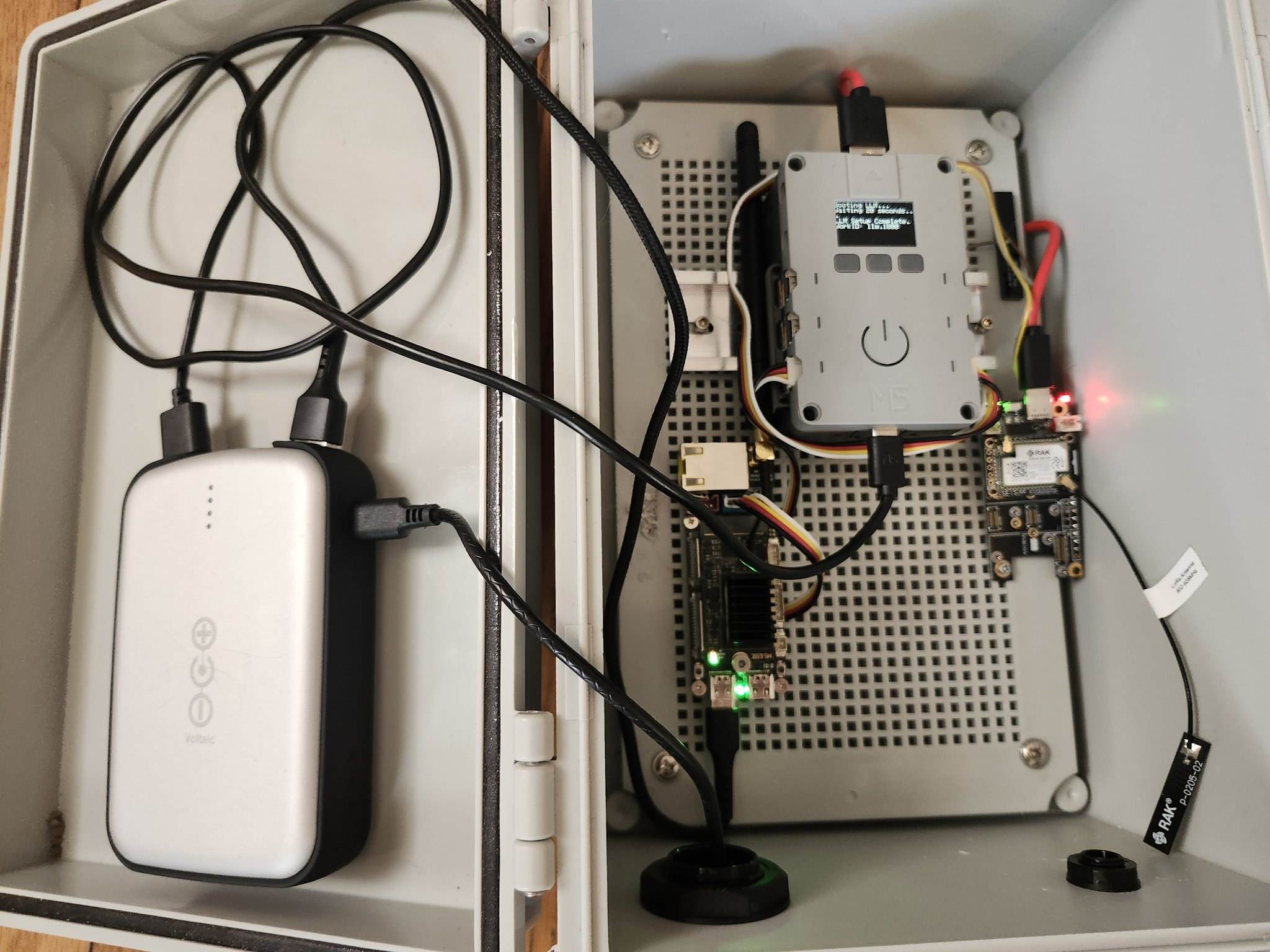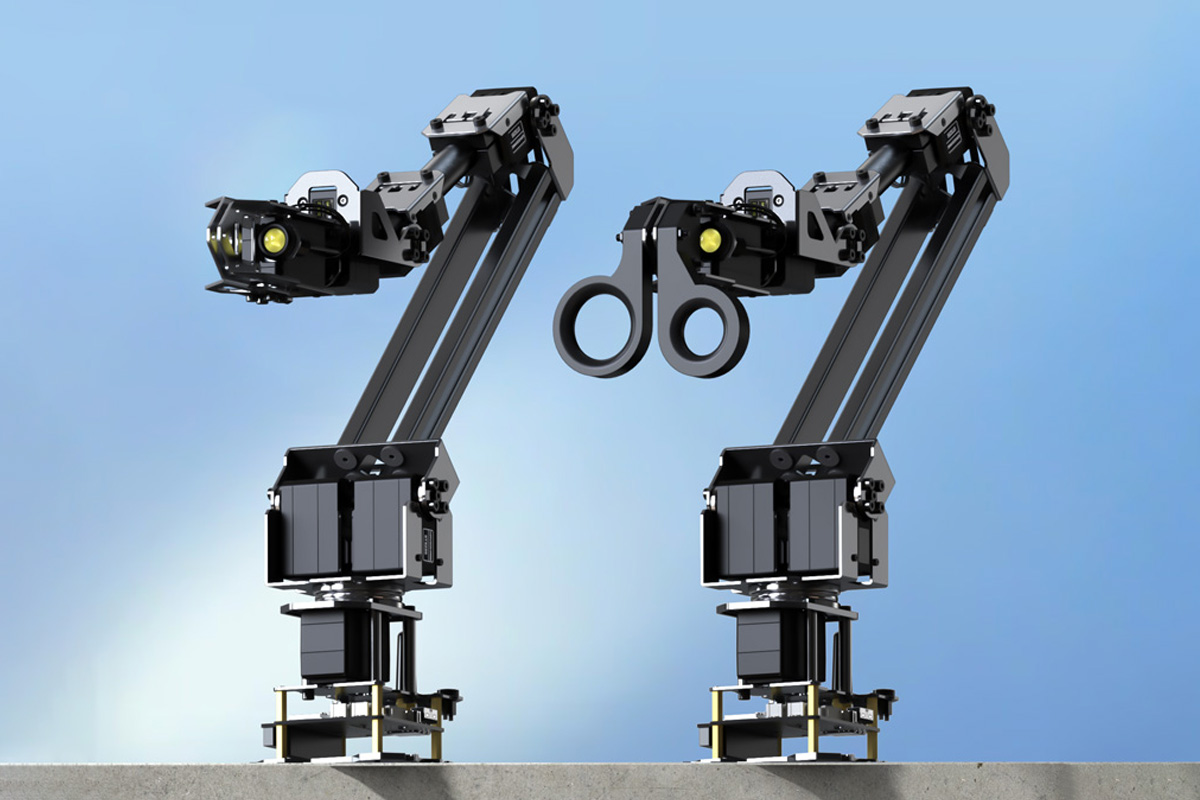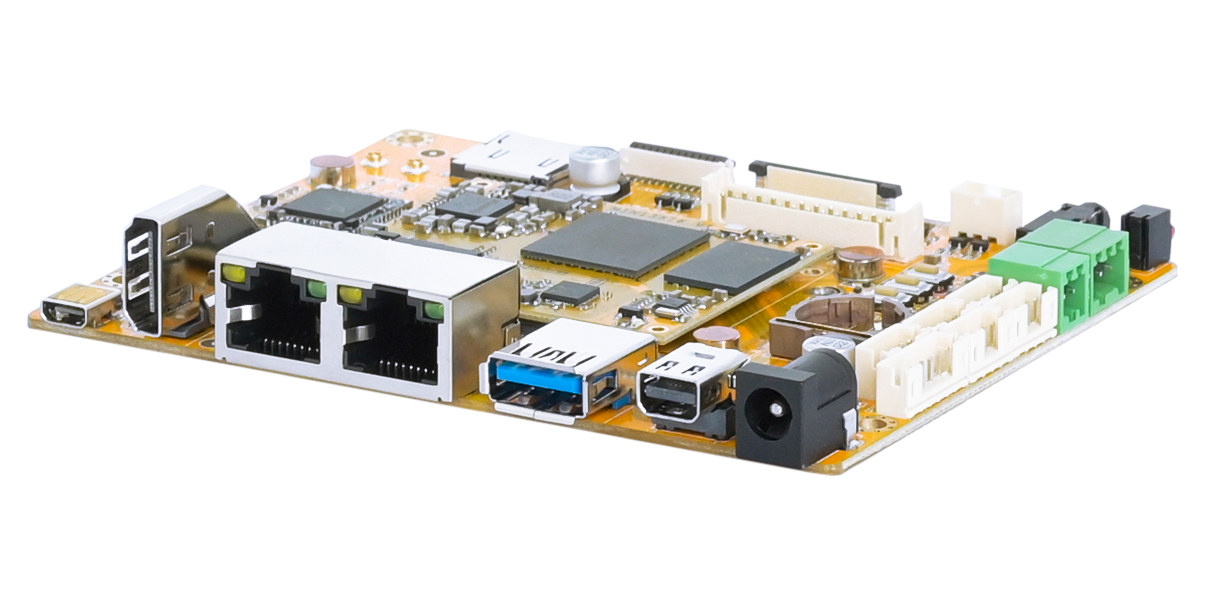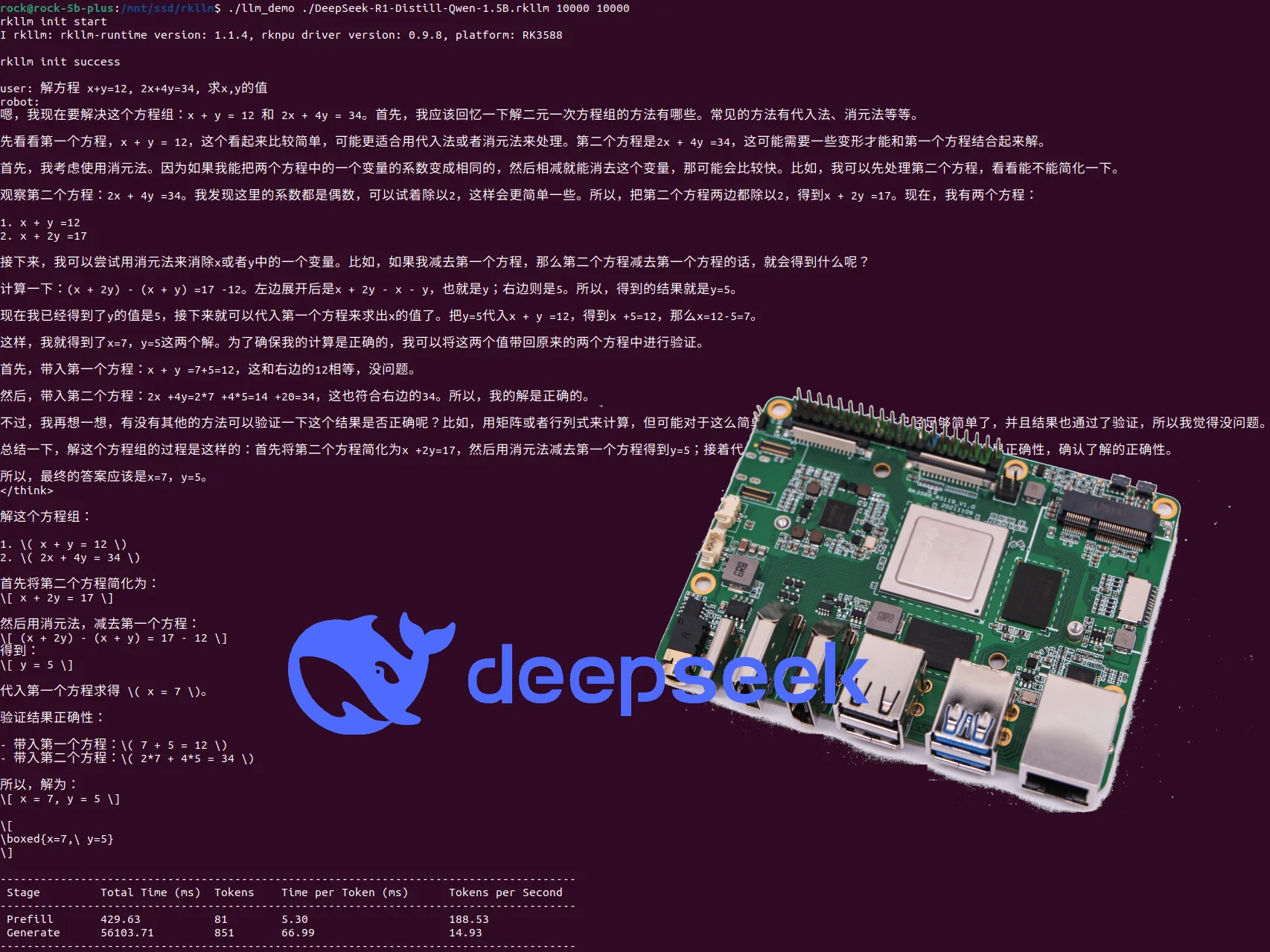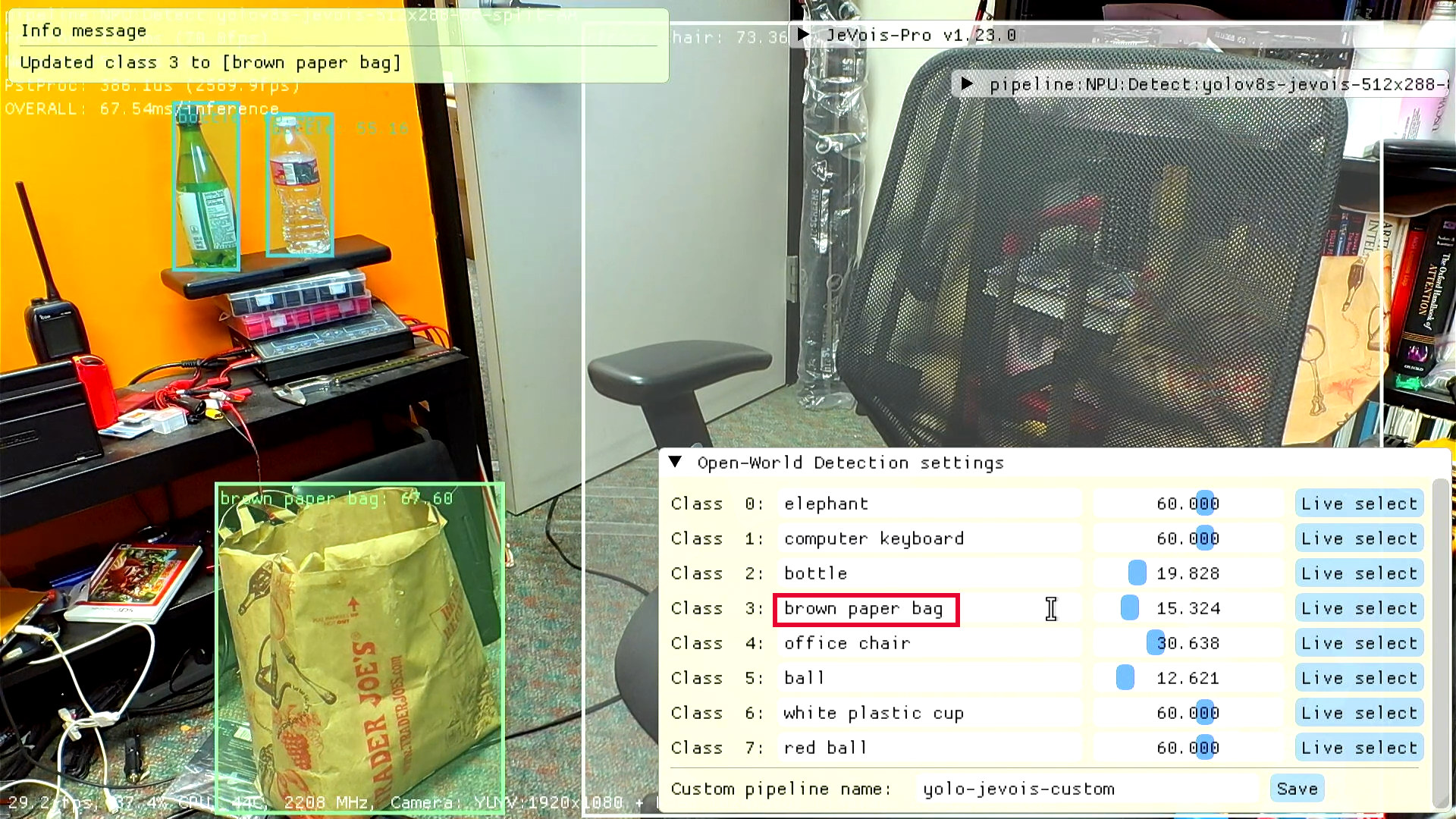People are trying to run LLMs on all sorts of low-end hardware with often limited usefulness, and when I saw a solar LLM over Meshtastic demo on X, I first laughed. I did not see the reason for it and LoRa hardware is usually really low-end with Meshtastic open-source firmware typically used for off-grid messaging and GPS location sharing. But after thinking more about it, it could prove useful to receive information through mobile devices during disasters where power and internet connectivity can not be taken for granted. Let’s check Colonel Panic’s solution first. The short post only mentions it’s a solar LLM over Meshtastic using M5Stack hardware. On the left, we must have a power bank charge over USB (through a USB solar panel?) with two USB outputs powering a controller and a board on the right. The main controller with a small display and enclosure is an ESP32-powered […]
LLMStick – An AI and LLM USB device based on Raspberry Pi Zero W and optimized llama.cpp
Youtuber and tech enthusiast Binh Pham has recently built a portable plug-and-play AI and LLM device housed in a USB stick called the LLMStick and built around a Raspberry Pi Zero W. This device portrays the concept of a local plug-and-play LLM which you can use without the internet. After DeepSeek shook the world with its performance and open-source accessibility, we have seen tools like Exo that allow you to run large language models (LLMs) on a cluster of devices, like computers, smartphones, and single-board computers, effectively distributing the processing load. We have also seen Radxa release instructions to run DeepSeek R1 (Qwen2 1.5B) on a Rockchip RK3588-based SBC with 6 TOPS NPU. Pham thought of using the llama.cpp project as it’s specifically designed for devices with limited resources. However, running llama.cpp on the Raspberry Pi Zero W wasn’t straightforward and he had to face architecture incompatibility as the old […]
Vaaman reconfigurable edge computer features Rockchip RK3399 SoC and Efinix Trion T120 FPGA (Crowdfunding)
Vaaman is a reconfigurable single-board edge computer that integrates a Rockchip RK3399 hexa-core ARM processor with an Efinix Trion T120 FPGA, offering a reconfigurable platform for edge computing applications. The board combines the flexibility of an FPGA with the raw power of a hard processor to create a system capable of adapting to varying computational demands in real time. The compact SBC features the Rockchip RK3399 hexa-core processor with two Cortex-A72 cores and four Cortex-A53 cores, as well as an Efinix Trion T120 FPGA with 112,128 logic elements, interlinked with RK3399 via a high-speed 300Mbps bridge (but it’s unclear how this is implemented). It is billed as a “Raspberry Pi-style board for the FPGA world” that can be used for cryptographic acceleration, software-defined radio (SDR), digital signal processing, real-time robotics, real-time video processing, edge AI deployments, industrial automation, and hardware prototyping. It features a 40-pin Raspberry Pi-compatible GPIO header and […]
Waveshare ESP32 robotic arm kit with 5+1 DoF supports ROS2, LeRobot, and Jetson Orin NX integration
Waveshare has recently released the RoArm-M3-Pro and RoArm-M3-S, a 5+1 DOF high-torque ESP32 robotic arm kit. The main difference between the two is that the RoArm-M3-Pro features all-metal ST3235 bus servos for durability and longevity, on the other hand, the RoArm-M3-S uses standard servo motors which are less durable for long-term use. These robotic arms feature a lightweight structure, a 360° omnidirectional base, and five flexible joints, which together create a 1m workspace with a 200 grams @ 0.5m payload. A 2-DOF wrist joint enables multi-dimensional clamping and precise force control. It integrates an ESP32 MCU, supporting multiple wireless control modes via a web app, it also supports inverse kinematics for accurate positioning, curve velocity control for smooth motion, and adaptive force control. The design is open source and with ROS2 compatibility, it allows secondary development via JSON commands and ESP-NOW for multi-device communication. Compatible with the LeRobot AI framework, […]
Boardcon SBC3576 – A feature-rich Rockchip RK3576 SBC with HDMI, mini DP, dual GbE, WiFi 6, optional 5G/4G LTE module, and more
Boardcon SBC3576 is a feature-rich single board computer (SBC) based on the MINI3576 system-on-module powered by a Rockchip RK3576 AI SoC and equipped with two 100-pin and one 44-pin board-to-board connectors for interfacing with the carrier board. The carrier board is equipped with up to 8GB RAM, 128GB eMMC flash, two gigabit Ethernet ports, a WiFi 6 and Bluetooth 5.3 module, 4K-capable HDMI 2.1 and mini DP video outputs, a mini HDMI input port, a USB 3.0 Type-A port, RS485 and CAN Bus terminal block, and more. The Rockchip RK3576 SoC comes with the same 6 TOPS NPU found in the Rockchip RK3588/RK3588S SoC and can be used as a lower-cost alternative with less performance. Boardcon SBC3576 specifications: SoC – Rockchip RK3576 CPU 4x Cortex-A72 cores at 2.2GHz, four Cortex-A53 cores at 1.8GHz Arm Cortex-M0 MCU at 400MHz GPU – ARM Mali-G52 MC3 GPU clocked at 1GHz with support for OpenGL […]
Edge video processing platform features NXP i.MX 8M Plus, i.MX 93, or i.MX 95 SoC, supports up to 23 camera types
DAB Embedded AquaEdge is a compact computer based on NXP i.MX 8M Plus, i.MX 93, or i.MX 95 SoC working as an edge video processing platform and supporting 23 types of vision cameras with resolution from VGA up to 12MP, and global/rolling shutter. The small edge computer features a gigabit Ethernet RJ45 jack with PoE to power the device. It is also equipped with a single GSML2 connector to connect a camera whose input can be processed by the built-in AI accelerator found in the selected NXP i.MX processors. Other external ports include a microSD card slot, a USB 3.0 Type-A port, and a mini HDMI port (for the NXP i.MX 8M Plus model only). DAB Embedded AquaEdge specifications: SoC / Memory / Storage options NXP i.MX 8M Plus CPU – Quad-core Cortex-A53 processor @ 1.8GH, Arm Cortex-M7 real-time core AI accelerator – 2.3 TOPS NPU VPU Encoder up to […]
DeepSeek shown to run on Rockchip RK3588 with AI acceleration at about 15 tokens/s
DeepSeek R1 model was released a few weeks ago and Brian Roemmele claimed to run it locally on a Raspberry Pi at 200 tokens per second promising to release a Raspberry Pi image “as soon as all tests are complete”. He further explains the Raspberry Pi 5 had a few HATs including a Hailo AI accelerator, but that’s about all the information we have so far, and I assume he used the distilled model with 1.5 billion parameters. Jeff Geerling did his own tests with DeepSeek-R1 (Qwen 14B), but that was only on the CPU at 1.4 token/s, and he later installed an AMD W7700 graphics card on it for better performance. Other people made TinyZero models based on DeepSeekR1 optimized for Raspberry Pi, but that’s specific to countdown and multiplication tasks and still runs on the CPU only. So I was happy to finally see Radxa release instructions to […]
YOLO-Jevois leverages YOLO-World to enable open-vocabulary object detection at runtime, no dataset or training needed
YOLO is one of the most popular edge AI computer vision models that detects multiple objects and works out of the box for the objects for which it has been trained on. But adding another object would typically involve a lot of work as you’d need to collect a dataset, manually annotate the objects you want to detect, train the network, and then possibly quantize it for edge deployment on an AI accelerator. This is basically true for all computer vision models, and we’ve already seen Edge Impulse facilitate the annotation process using GPT-4o and NVIDIA TAO to train TinyML models for microcontrollers. However, researchers at jevois.org have managed to do something even more impressive with YOLO-Jevois “open-vocabulary object detection”, based on Tencent AI Lab’s YOLO-World, to add new objects in YOLO at runtime by simply typing words or selecting part of the image. It also updates class definitions on […]


